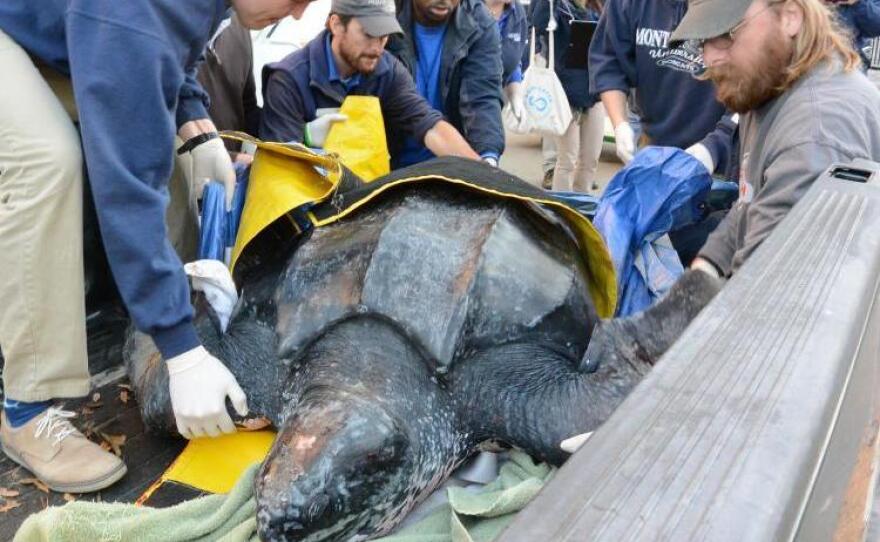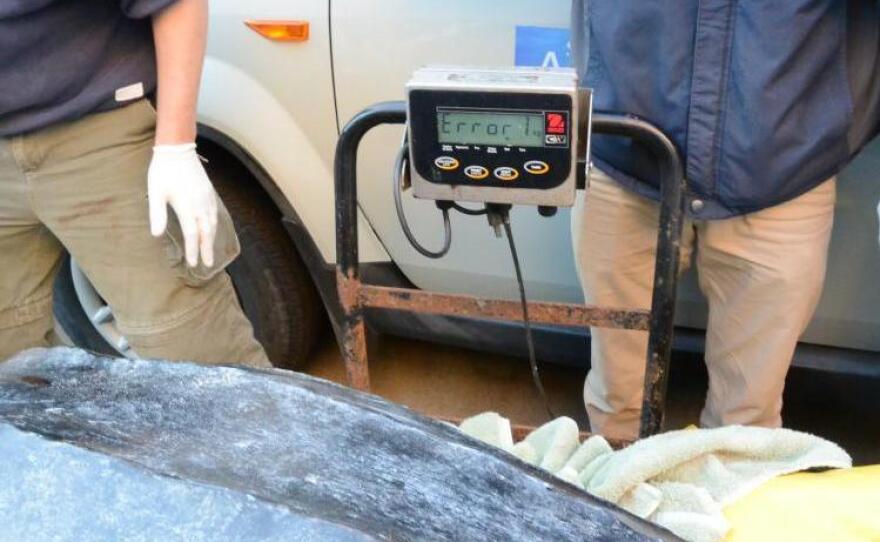





A 475-pound leatherback sea turtle that was rescued from a remote beach in South Carolina will be returned to the ocean today, after being found stranded ashore and nursed back to health. It took five people to carry the creature, officials say.
The turtle "immediately responded to treatments" of fluids, vitamins and antibiotics after it was rescued Saturday, says spokesperson Kate Dittloff of the South Carolina Aquarium. Today, she adds, "our veterinarian has cleared him/her for release."
A gender can't be determined for the turtle: Despite its size, it's still too young to have a mature reproductive system. It is believed to be around 10 or 15 years old. Mature leatherbacks can reach sizes of up to around 2,000 pounds.
If it's a success, the release would end a rare visit ashore by a leatherback, the world's largest turtle — and one of the largest reptiles. Leatherbacks commonly migrate along the Atlantic Coast, but they usually make the trip much farther out from the coast.
The turtle's recovery has the aquarium's staff "beyond excited," Dittloff says.
Details of the turtle's return to the ocean were still being finalized Thursday, but researchers at the aquarium say they've already acclimated the turtle to the current coastal temperature of 58 degrees, by cooling down the water in its tank.
"Despite being cold-blooded reptiles, leatherback sea turtles can generate some body heat and can endure much cooler temperatures than other sea turtle species," Dittloff says.
The staff of the aquarium's Sea Turtle Hospital have named the turtle Yawkey, after the area it was spotted in near Georgetown, S.C. It was transported to the aquarium in Charleston, about an hour away. The organization has been caring for the turtle with help from the South Carolina Department of Natural Resources.
There have reportedly only been a handful of live rescues of a leatherback sea turtle in the U.S. Here are more facts that help explain why the aquarium's staff was so excited to observe and save one of the creatures:
- From the American Museum of Natural History: "Leatherbacks have special adaptations that allow them to eliminate waste gases through their skin, so they can stay under water for extraordinarily long periods. Inside their bodies, they actually convert salt water to fresh water, ingesting the sea water around them and excreting the salt."
- From NOAA: "The leatherback is the only sea turtle that doesn't have a hard bony shell. A leatherback's top shell (carapace) is about 1.5 inches (4 cm) thick and consists of leathery, oil-saturated connective tissue overlaying loosely interlocking dermal bones. Their carapace has seven longitudinal ridges and tapers to a blunt point."
- From the World Wildlife Fund: "Although their distribution is wide, numbers of leatherback turtles have seriously declined during the last century as a result of intense egg collection and fisheries bycatch. Globally, leatherback status according to IUCN is listed as Vulnerable, but many subpopulations (such as in the Pacific and Southwest Atlantic) are Critically Endangered."
- And finally, our favorite fact: Leatherback turtles eat jellyfish.
Copyright 2015 NPR. To see more, visit http://www.npr.org/.






